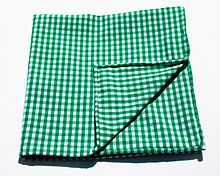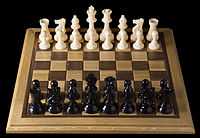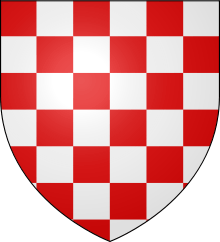Check (pattern)

A check (also checker, Brit: chequer) is a pattern of modified stripes consisting of crossed horizontal and vertical lines forming squares.
Etymology

The word is derived from the ancient Persian language word shah, meaning "king", from the oriental game of chess, played on a squared board, particularly from the expression shah mat, "the king is dead", in modern chess parlance "check-mate". The word entered the French language as echec in the 11th century,[1] thence into English.
Use in fabrics
Check-patterned fabrics display bands in two or more colours in woven cloth. Checks are traditionally associated with Scotland where woven dyed wool was, at one time, a principal cloth. District checks were created as camouflage for moving inconspicuously on the laird's lands. The checks are associated with a specific area as opposed to the tartan of a family or clan. Checks are also used as distinctive patterns for woven cloth in modern designs.
Other uses

The check pattern is also used in many areas other than textile styles, for example: on a board used by the mediaeval Exchequer to perform financial computations, and on a board used for playing checkers and chess, and in heraldry.
See also
- Argyle (pattern)
- Checkered flag
- Flannel
- Gingham
- Madras (cloth)
- Plaid (pattern)
- Tartan
- Tattersall (cloth)
- Diapering
Sources
- Harrison, E.S.; Our Scottish District Checks; National Association of Woollen Manufacturers, Edinburgh; 1968 p6.
References
- ↑ Larousse Dictionnaire de la Langue Francaise, Lexis, Paris, 1993
| ||||||||||||||||||||||||||||||||||||||||||||||||


.svg.png)